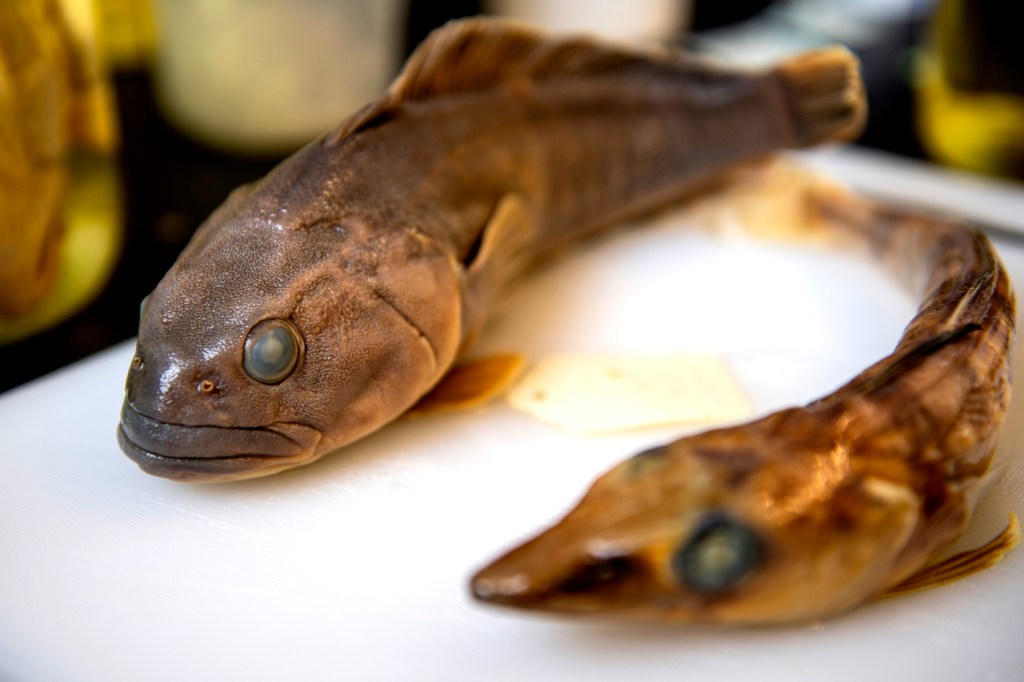Antarctic fish evolved to live in extreme cold—will they adapt to ocean warming?

Over millions of years, a group of fish known as notothenioids adapted to the cooling, now icy, waters of the Southern Ocean surrounding Antarctica by evolving their own type of antifreeze.
But that’s not all.
A subgroup of the notothenioids, known as icefishes, did away with red blood cells and hemoglobin entirely, relying on the high dissolved oxygen concentrations characteristic of their chilly marine environment to supply their blood plasma with oxygen.
The changes happened rather rapidly, in evolutionary terms, according to a new paper in Nature Communications by researchers from Northeastern and other universities.
Based on new sequencing of the genomes of 24 fish in the notothenioid group, the onset of antifreeze gene acquisition, hemoglobin gene loss, and other changes began about 10 million years ago, says Northeastern professor emeritus H. William Detrich III.
In a geological and evolutionary context, that is a “fairly short period of time,” he says.

Detrich says the paper, the first to create high-quality genomes for such a large proportion of notothenioid fish, including reference-quality genomes for five species, will help provide clues to the future of biodiversity on a warming planet.
It could also be exploited for future medical discoveries, such as the possible treatment of anemia and osteopenia.
The paper will be a “’go-to citation as the genome data are used to explore the evolution of these unique fish and to evaluate their resilience in the context of climate change as the Southern Ocean warms,” Detrich says.
The researchers used a variety of sequencing technologies to generate and analyze the genome assemblies for the 24 fish.
The icefishes evolved in a way that allowed them to live under these conditions.
H. William Detrich III, Professor Emeritus of Marine and Environmental Sciences
Dominating as waters cool
The Antarctic wasn’t always cold, Detrich says.
It once had a temperate climate, but as continental drift separated Antarctica from other land masses millions of years ago, a circumpolar current became established around the continent and began cooling, ultimately driving most fish groups out of the Southern Ocean.
But not notothenioid fish.
“In the process of their evolution, they evolved antifreeze proteins that keep their bodies from freezing at minus two centigrade, or 28 degrees Fahrenheit, the freezing point of seawater,” says Detrich, one of the paper’s 21 authors.
The Nature Communications paper provides “the most complete understanding of the evolution of the antifreeze protein family that has ever existed,” he says.
No red blood cells? No problem!
The researchers studied the genomes of 24 out of the approximately 130 species of notothenioid fish, including the family known as icefishes.
The 16 species of icefish are known for their eerie translucent appearance and lack of hemoglobin—the only vertebrates out of 70,000 species to lack this vital oxygen transport protein and red blood cells.
“The reason they could do that was the water became extremely cold, and cold water dissolves more oxygen than warm water,” Detrich says.
“In the very tempestuous Southern Ocean with storms constantly stirring, the water is basically saturated with oxygen,” he says.
“The icefishes evolved in a way that allowed them to live under these conditions.”
But, he asks, do icefishes have the genetic capability to handle rising Southern Ocean temperatures, which will reduce the level of dissolved oxygen, over time periods measured in centuries?
Genomes of such a large cohort of the notothenioid fish “will stimulate and promote a lot of research into questions like this, questions of cold adaptation and resilience to higher temperatures,” Detrich says.
Medical applications?
He and other researchers collaborated closely with the Wellcome Sanger Institute in the United Kingdom on everything from collecting tissue samples for DNA analysis to sequencing genomes, assigning chromosomes and writing up the report.
The paper’s findings could eventually be used in medical applications for humans, he says.
“These fish have several traits that mimic human diseases,” such as anemia, Detrich says.
Understanding the critical gene functions that icefish lost would help reveal previously unknown genes that are “really important in making red blood cells,” he says.
“And if we can discover new genes involved in making red blood cells, maybe we can create new therapeutic approaches to treating anemia.”
Notothenioid fish also lost bone density as many species evolved from the ancestral, negatively buoyant bottom feeder to near neutral buoyancy, which allows them to exploit food resources in the water column.
“That’s a major advantage to the fish,” Detrich says.
“But in humans, reduction in bone mineral density is a big problem—osteopenia, which predisposes to osteoporosis. So fishes can be used to find genes that are important (for bone density) and that are maybe not known yet.”
“The genomes are going to stimulate a great deal of research on this very interesting fish group,” Detrich says.
Cynthia McCormick Hibbert is a Northeastern Global News reporter. Email her at c.hibbert@northeastern.edu or contact her on Twitter @HibbertCynthia.






